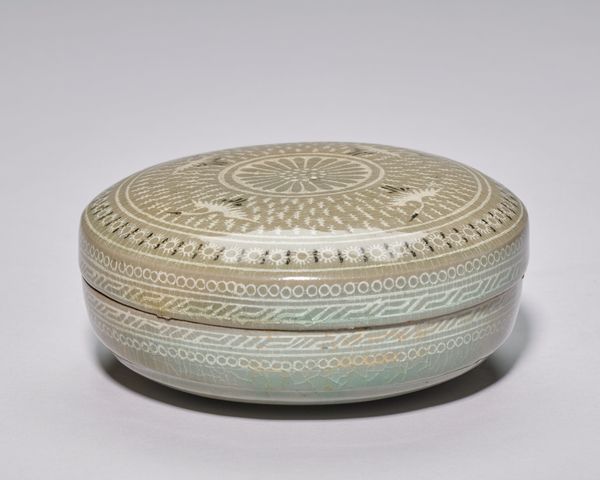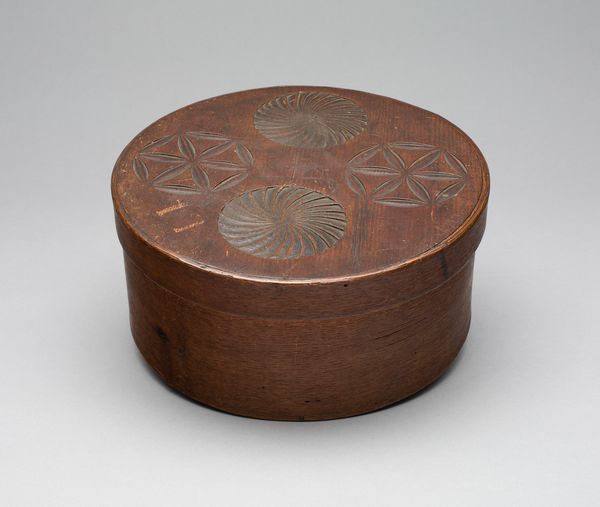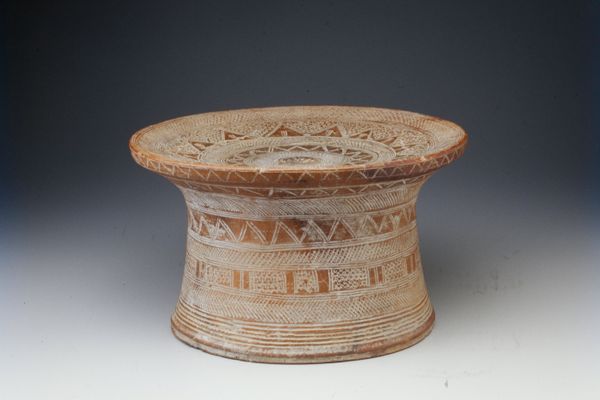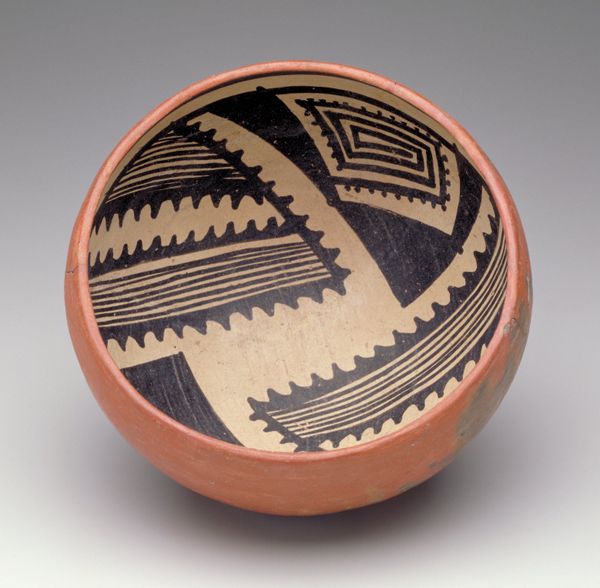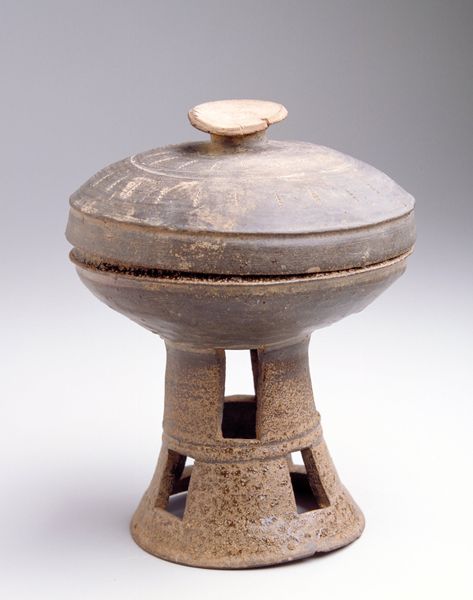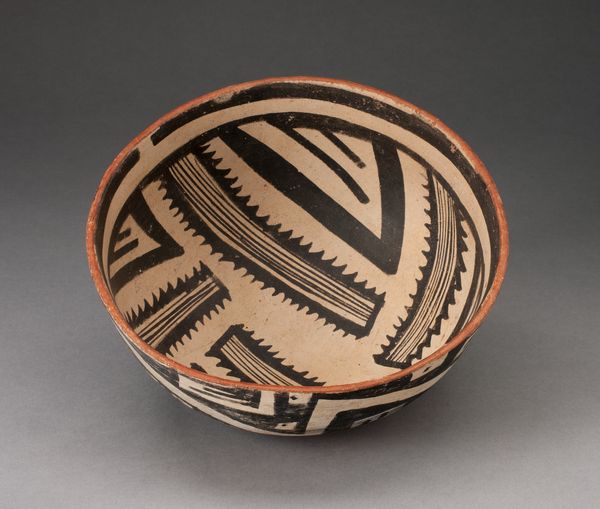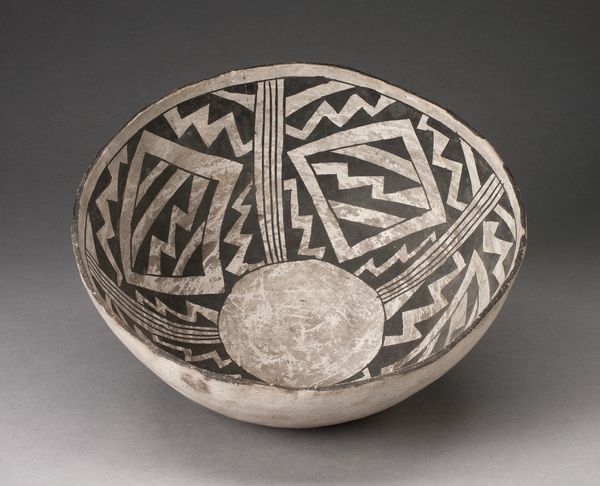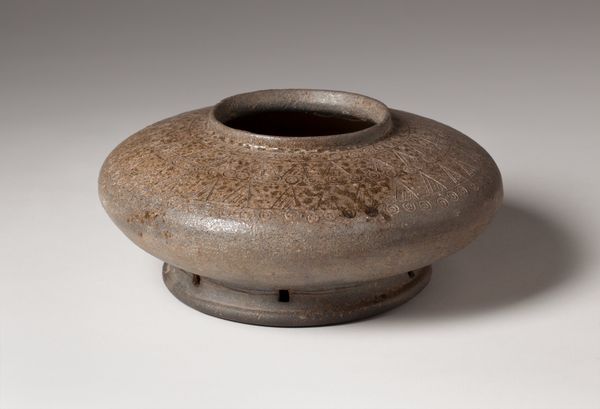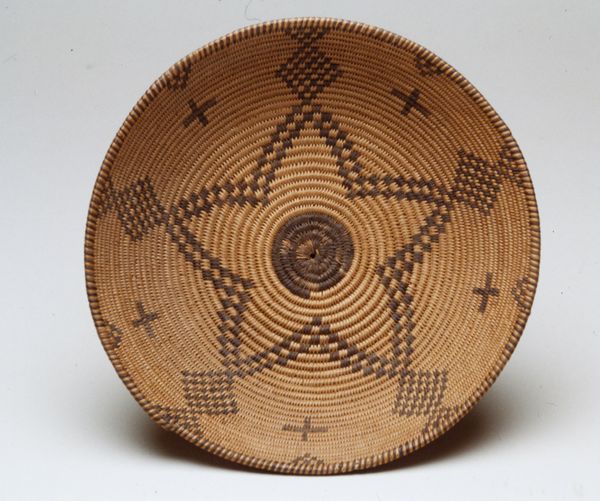
Covered box with wavy lines and chrysanthemums c. 15th century
0:00
0:00
ceramic
#
medieval
#
asian-art
#
ceramic
#
form
#
geometric
#
ceramic
#
decorative-art
Dimensions: 4 × 6 1/4 × 6 1/4 in. (10.16 × 15.88 × 15.88 cm)
Copyright: Public Domain
Editor: Here we have a ceramic covered box with wavy lines and chrysanthemums, dating back to the 15th century. The artist is anonymous, but I’m really drawn to how the simple geometric patterns create such an elegant object. How would you interpret this piece? Curator: The box is interesting as a window into 15th century society. Given the intricate detailing, though not necessarily high art, consider its function. What was its purpose in its original social setting? Who owned it and how was it used? Objects like this reflect aspects of taste, status, and even trade networks of the time. Editor: That's a great point. So, the box itself almost becomes a historical document, revealing information about the period. Was there a specific cultural significance attached to the chrysanthemums or the concentric circles? Curator: Precisely. Chrysanthemums in East Asian art often symbolize longevity and nobility. The repetition of circles could represent cycles of life and continuity, common themes found across cultures. Think about the message its owner intended to convey or perhaps, the expectations placed upon them. Do you think the box speaks more to an individual's personal beliefs or their public identity? Editor: That’s a tough question, I guess it could be both, a reflection of their personal values and how they wanted to be perceived by society. The craftsmanship is really impressive for a functional object. Curator: Indeed. Its existence within the Minneapolis Institute of Art shapes how we perceive it now. We transform a humble container into something worthy of display and scholarly investigation. Consider what meanings the museum setting creates. Editor: That really changes the way I view everyday objects; understanding how they fit into their time gives them so much more depth. Thanks for that insightful overview! Curator: My pleasure. I learned much from your ideas on craft as social intention.
Comments
minneapolisinstituteofart about 2 years ago
⋮
Buncheong ware, a high-fired, gray stoneware often boldly decorated with designs in white slip, was a direct descendent of the earlier celadon wares of the Goryeo dynasty. Yet Buncheong also represents a departure from these earlier wares inspired by Chinese porcelain. Although the clay and technology are similar, Buncheong glaze has less iron and the clay is less refined, resulting in the more earthy appearance of this covered box. The cover and body are decorated with designs of wavy lines and stylized chrysanthemums that were stamped onto the clay with white slip.
Join the conversation
Join millions of artists and users on Artera today and experience the ultimate creative platform.
